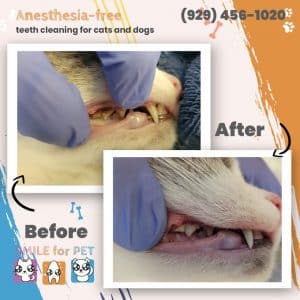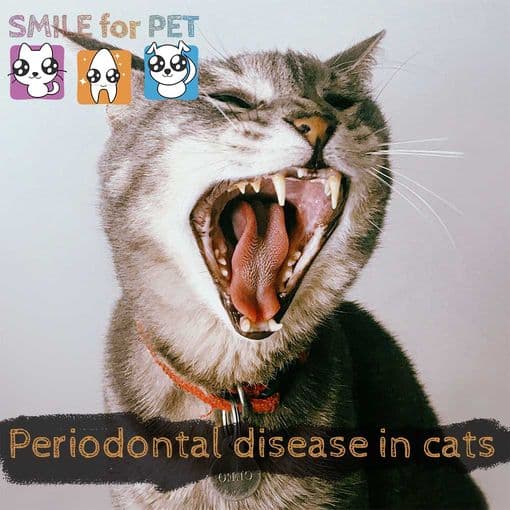Introduction into periodontal disease in cats
According to statistics, 75% of cats over 6-7 years old suffer from diseases of the teeth and gums. One of these diseases is periodontal disease. In the early stages of periodontal disease in cats does not cause pain and discomfort, so the disease often becomes neglected. In order to prevent its progression, you need to examine the pet’s oral cavity every month.
Periodontitis is one of the elements of the ligamentous apparatus of the teeth. Its function is to protect the enamel from thermal and mechanical damage, inflammation.
The peculiarity of periodontal disease in cats has a slow, chronic course. The development of acute inflammation of the gums, accompanied by the rapid destruction of periodontitis, indicates the presence of another pathology – periodontitis.
Due to similar symptoms, this disease is often confused with periodontal disease.
The cause of the disease is pathogenic microorganisms and organic substances, which, holding together, form dental plaque. Bacteria that multiply in the gum folds produce toxins that increase inflammation, causing redness, swelling, and loosening of the gums.
By exerting a constant effect on the edge of the gums, bacteria prevent the regeneration of damaged tissues. After penetration into the bony area, the teeth begin to decay.
In the case of the development of gingivitis (inflammation of the gums), the danger of spreading to the area of periodontitis, and the development of periodontal disease. Lack of treatment for this disease can cause the formation of destructive processes: the destruction of the dental alveoli and the teeth themselves, their rotting, severe bleeding of the gums. A neglected disease often becomes the cause of severe suppuration, the development of sepsis, and death.
The cause of the disease is pathogenic microorganisms and organic substances, which, holding together, form dental plaque. Bacteria that multiply in the gum folds produce toxins that increase inflammation, causing redness, swelling, and loosening of the gums.
By exerting a constant effect on the edge of the gums, bacteria prevent the regeneration of damaged tissues. After penetration into the bony area, the teeth begin to decay.
Persian cats are especially susceptible to this disease. This is due to the structure of their oral cavity – after eating, food debris lingers on the teeth, as a result of which, over time, tartar forms on their surface.
Other causes of the development of the disease include
- Injuries to the mucous membranes of the oral cavity. Injury to the gums can occur when fighting animals, while carelessly eating fish or poultry bones. As a result, the resulting wounds get infected, and the inflammatory process spreads to the teeth.
- Diseases of the gastrointestinal tract, in which the infection spreads into the oral cavity.
- Avitaminosis, unbalanced diet. Pets that live at home are not able to independently obtain food useful for their health. Therefore, they may suffer from vitamin deficiency. To prevent its development, indoor cat owners need to provide them with enough nutrients. Pets are advised to periodically give vitamin complexes for cats.
- The presence of gingivitis or stomatitis. These diseases often cause the appearance of periodontal disease. Therefore, it is necessary to check the condition of the cat’s oral cavity at least once a month. And if any suspicious symptoms occur, make an urgent visit to the veterinarian.
- Renal failure, diabetes mellitus, rhinotracheitis, immunodeficiency. The listed pathologies can also lead to the development of periodontal disease; therefore, it is necessary to constantly monitor the condition of the teeth of animals suffering from such diseases.
If you see yellow plaque and tartar, you should daily brush with cats’ toothpaste on daily basis. Smile4pet anesthesia-free teeth cleaning is offering regular professional dental hygiene. Most of our lovely kitty patience is due once per year. Even once per year is enough to maintain cats’ oral health.
Other symptoms of periodontal disease in Cats
A yellowish «coating» and hard build-up are not the only signs of pathology. It can also be identified by the following symptoms:
- The appearance of an unpleasant, putrid odor from the mouth.
- Poor appetite. The animal prefers soft foods and refuses hard ones.
- Increased salivation, impurities of blood and pus in the saliva, wet hair in the chin area.
- Changes in animal behavior: champing while chewing, trembling of the lower jaw, constant rubbing of the muzzle with the paw.
- Bleeding, redness of the gums, the presence of massive, hard deposits of dark color on the teeth.
If you press on the gum of a sick animal, gray pus is released from under it. The teeth can become loose, but due to the long roots, they do not fall out for a long time. By multiplying, bacteria weaken the immune system, aggravate the course of renal failure and diabetes, and change the composition of the blood. The infectious process often spreads from the gums and teeth to the larynx, causing the development of laryngitis, pharyngitis.
Seeding with bacteria of the bronchi leads to the formation of broncho-pulmonary pathologies, the development of gastritis, dysbiosis. Due to chronic laryngitis or pharyngitis, the cat has pain when swallowing, it loses its appetite, which causes dehydration and weight loss. Due to constant discomfort and pain, the once affectionate fluffy pet becomes irritable and aggressive.


